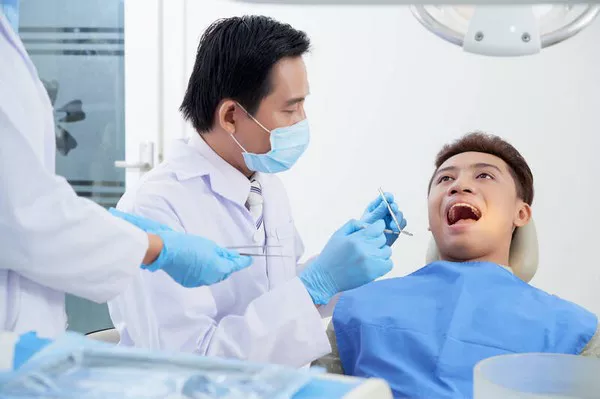If you have just had your wisdom teeth removed, congratulations on making it through the procedure! Now that you’re in recovery mode, it’s important to take good care of yourself and eat foods that are gentle on your mouth and won’t cause any further discomfort or pain. In this article, we’ll explore some of the best foods to eat after wisdom tooth extraction, as well as those to avoid.
Soft Foods
In the days following your wisdom tooth extraction, you’ll want to stick to soft foods that won’t require too much chewing or exertion from your jaw. Some great options include:
- Mashed potatoes: This classic comfort food is easy to swallow and won’t irritate your gums.
- Scrambled eggs: Eggs are a great source of protein and are easy to prepare in a soft and fluffy scrambled form.
- Smoothies: A nutritious smoothie made with fruits, vegetables, and protein powder can be a great way to get essential nutrients without having to eat solid foods.
- Broth-based soups: Soups that are broth-based, such as chicken noodle soup or vegetable soup, can be soothing on sore gums and provide warmth and hydration.
Foods to Avoid
While there are plenty of soft foods that are safe to eat after wisdom tooth extraction, there are also some foods you should avoid to prevent any further irritation or damage to your mouth. These include:
Crunchy foods:
Chips, popcorn, and other crunchy snacks can easily get stuck in the sockets where your wisdom teeth used to be, causing pain and inflammation.
Spicy foods:
Spices can cause irritation and burning sensations on your gums, which is the last thing you want after dental surgery.
Acidic foods:
Foods high in acid, such as tomatoes, citrus fruits, and vinegar, can irritate gum tissue and slow down the healing process.
Hard foods:
Steak, nuts, and other hard, chewy foods can be tough on your jaw, making it difficult to chew and swallow.
Hydrating Foods
In addition to soft foods, it’s important to stay hydrated after wisdom tooth extraction. Drinking plenty of water and eating hydrating foods can help keep your mouth moist and prevent dry socket, a painful condition that occurs when the blood clot protecting the extraction site dissolves or dislodges. Some hydrating foods to add to your post-extraction diet include:
- Watermelon: This juicy fruit is high in water content and can help keep you hydrated.
- Cucumbers: Another moisture-rich food, cucumbers are also low in calories and high in fiber.
Smoothies: As mentioned earlier, smoothies made with fruits and vegetables can be a great source of hydration as well as nutrients.
Protein-Rich Foods
After any surgery, your body needs protein to help repair and rebuild tissues. Eating protein-rich foods can also help keep you full and satisfied so you don’t feel the need to snack on less healthy options. Some protein-rich foods to include in your post-wisdom tooth extraction diet are:
Greek yogurt:
High in protein and easy to swallow, Greek yogurt can be a great snack or breakfast option.
Cottage cheese:
Soft and creamy, cottage cheese is another excellent source of protein that won’t irritate your gums.
Soft fish:
Fish such as salmon or tilapia are easy to prepare and provide a good amount of protein, as well as important omega-3 fatty acids.
Tips for Eating After Wisdom Tooth Extraction
In addition to choosing the right foods, there are a few other tips to keep in mind when eating after wisdom tooth extraction:
- Avoid using straws, as the suction can dislodge the blood clot in the extraction site.
- Rinse your mouth gently with warm salt water after eating to help keep the area clean and free from bacteria.
- Take small bites and chew slowly to avoid aggravating your jaws.
- Don’t eat anything too hot or too cold, as extreme temperatures can cause pain or discomfort in your mouth.
In conclusion, eating after wisdom tooth extraction doesn’t have to be a daunting task. By choosing soft, hydrating, and protein-rich foods and avoiding spicy, crunchy, and hard foods, you can help ensure a smooth and speedy recovery. Remember to stay hydrated, take it easy on your jaw, and follow any post-operative instructions provided by your dentist or oral surgeon.
Related Topics:
































